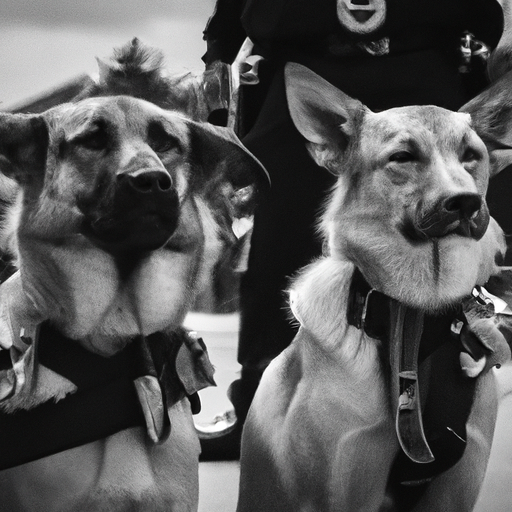Introduction
You, as a caregiver, have a natural instinct to protect and serve, much like our four-legged friends who serve on the police force. Dogs have been working alongside humans for centuries, and their roles in society have evolved significantly over the years. One such role that dogs have mastered is that of a police dog, or ‘K-9’ as they are commonly referred to. Let’s delve into the world of these brave canines and understand what makes certain breeds ideal for police work.
The Most Common Breeds of Police Dogs
When you picture a police dog, certain breeds probably come to mind. These breeds are preferred due to their temperament, intelligence, and physical capabilities:
- German Shepherds: Known for their intelligence and versatility, German Shepherds are the most common breed of police dog. Their keen sense of smell and impressive physical strength make them ideal for a variety of tasks.
- Belgian Malinois: Similar to German Shepherds in many ways, Belgian Malinois are also favored for police work. They are agile, sturdy, and have an excellent work ethic.
- Labrador Retrievers: Primarily used for detection work, Labradors have a remarkable sense of smell. They are friendly, making them great for working in public spaces.
- Bloodhounds: Renowned for their tracking abilities, Bloodhounds are often used in search and rescue missions. Their sense of smell is so accurate, it can even be used as evidence in court.
- Rottweilers: Rottweilers are courageous and protective, making them suitable for police work. However, they require careful training due to their strong nature.
The Roles of Police Dogs
Police dogs are trained for specific roles, depending on their breed, temperament, and skills. Let’s take a closer look at the main roles these dogs play:
- Patrol Dogs: These dogs are trained to chase and hold suspects, search buildings, and detect explosives or narcotics. German Shepherds and Belgian Malinois often take on this role.
- Detection Dogs: These dogs specialize in detecting substances like drugs or explosives. Labradors are commonly used for this purpose due to their calm demeanor and superior sense of smell.
- Search and Rescue Dogs: These dogs are trained to find missing persons or track down fleeing suspects. Bloodhounds are often used because of their exceptional tracking abilities.
Training and Care of Police Dogs
As a caregiver, you know the importance of proper training and care. Training a police dog is a rigorous process that requires patience, consistency, and a deep understanding of dog behavior. Dogs usually start their training at a young age and go through extensive programs to learn the necessary skills for their specific roles.
Care is another crucial aspect. Just like humans, dogs also need rest and relaxation to perform their duties effectively. Regular vet check-ups, a balanced diet, and plenty of exercise are essential to keep a police dog healthy and fit.
The Impact of Police Dogs on Society
As protectors and servers, police dogs have a significant impact on society. They help maintain law and order, assist in search and rescue operations, and provide comfort to victims in distress. They are not just dogs; they are heroes.
FAQs
What breeds are police dogs?
German Shepherds, Belgian Malinois, Labrador Retrievers, Bloodhounds, and Rottweilers are commonly used as police dogs.
What roles do police dogs play?
Police dogs are trained for specific roles, including patrol, detection, and search and rescue.
How are police dogs trained?
Police dogs undergo rigorous training programs from a young age to learn the necessary skills for their specific roles.
How are police dogs cared for?
Police dogs require regular vet check-ups, a balanced diet, and plenty of exercise to stay healthy and fit.
What impact do police dogs have on society?
Police dogs help maintain law and order, assist in search and rescue operations, and provide comfort to victims in distress. They are invaluable members of our society.



